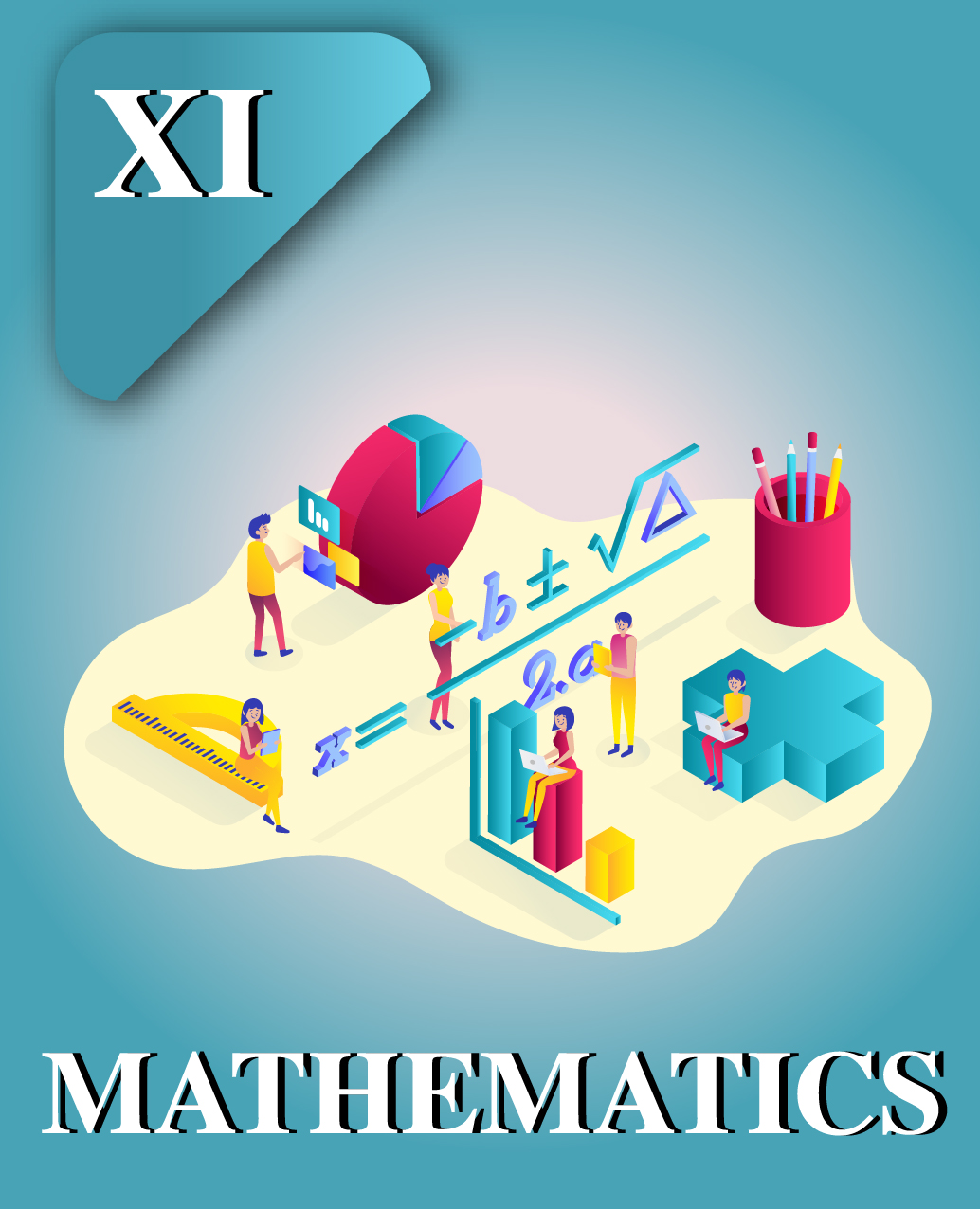About the Course
Mathematics is a science of numbers, formula of related structures, shapes and spaces in which they are contained and quantities and their changes. In this course of Class 11th mathematics you will learn about various important topics which are an integral part of higher level mathematics concepts. In this course the treatment and development of the various topics is logical with simple and lucid explanation. Every chapter begins with a mathematical quotation and a photograph of a renowned mathematician, which motivates the reader and creates interest.
Mathematics is a science of modelling, like this course contains probability which allows you to predict certain and impossible events by the help of several experiments. Overall this course aims to cover the whole spectrum of school providing the known on mathematics covering the learning objectives. This course have tried to provide communicative skills with different range of styles and various discussions followed by different level of Quiz in Analytical and creative manner.
Distinguishing features
-
- Fully covers the latest syllabus as prescribed by CBSE.
- The development of mathematical concept in each chapter is logical and simple and preparation of each new idea is based on the preceding one.
- Step-Wise working rule approach has been suggested for problem solving and same is followed in Illustrative examples in every chapter
- Each chapter contains practice tests with multiple tries which provides students with hints to solve the particular question and enhance their level of understanding.
- At the end of every chapter there is chapter test, which allows students to test their knowledge of particular topic.
Learning Objectives
-
- Enhancing the school based knowledge of the student at early level..
- Making the course easy and sophisticated emphasizing competency based educational process.
- With this course the learner particularly explores responds invents and bring out the meaning to the relevant things.
- Students can construct sufficient knowledge of Mathematics
- This course helps students to learn about many of the phenomena which they observe in their daily routine.
Requirements
-
- Refine their literary sensibility and enrich their aesthetic life through different literary generes.
- Student should have different language notice.
- use a dictionary or Glossary available in the courses or library to access to difficult term.
Target Audience
-
- Who is learning mathematics in class XI, student of class 11th &12th preparing for their Boards.
- This course mainly targets the student preparing for some of the govt. examination particularly for teaching field.
1.Sets
In this chapter, we will study about collection of objects known as sets, algebra of sets and some of it’s applications to real world problems.
2.Relations
In this chapter, we shall study about different types of relations defined on some sets and their properties.
3.Functions
In this chapter, we will study about a special kind of relation defined from one set to another known as function which lays the foundation of the study of the most important branch ‘Calculus’ of Mathematics.
4.Measurement of Angles
In this chapter, we propose to study different systems of measuring angles and the relation between them
5.Trigonometric Functions
In this chapter, we shall discuss the extended definitions of trigonometric ratios to angle of any magnitude in terms of radian measure and study them as functions.
6.Graphs of Trigonometric Functions
In this chapter, we shall study the method of drawing graphs of trigonometric functions.
7.Trigonometric Functions of Sum and Difference of Two Angles
In this Chapter, we shall study the methods of finding the values of trigonometric functions for sum and difference of two angles which will help us to find the values such as sin 15 ֯, cos 105 ֯, etc.
8.Trigonometric Functions of Multiple and Sub-multiple Angles
In this Chapter, we shall learn the methods of finding the values of trigonometric functions of multiple angles 2A, 3A, . etc. and sub-multiple angles A/2, A/3,. etc. in terms of trigonometric functions of angle A.
9.Conditional Identities
In this chapter, we shall study some of the trigonometric identities which are applicable under some certain conditions. Such an identity is a conditional identity.
10.Trigonometric Equations
In this chapter, we shall study the method of solving equations which involve trigonometric functions of unknown angles.
11.Sine and Cosine Formulae
In this chapter, we shall prove some relations between the sides and the trigonometric functions of the angles of a triangle. These relations will be found very useful in finding the area of triangles, polygons and also in solution of triangles.
12. Principle of Mathematical Induction
In this chapter, we shall learn a mathematical process which is used to establish the validity of a general result involving natural numbers.
13.Complex Numbers
In this chapter, we shall extend the study of real numbers to a new number system called as ‘complex number’. In this system the square root of any negative number would be meaningful.
14.Quadratic Equations
In this chapter, we shall study the methods of finding real as well as complex roots of the quadratic equations of the type ax2 + bx + c = 0, where a ¹ 0 and a, b, c are complex numbers.
15.Linear Inequalities
In this chapter, we shall learn the methods of solving linear inequalities involving one and two variables. The values of the variables which satisfy an inequality are called the solutions of the inequality. The study of inequalities is very useful in solving problems in Science, Mathematics, Statistics, Engineering, Economics, Operational research, Psychology, etc.
16.Permutations
In this chapter, we shall learn some basic counting techniques. These techniques will help us in finding the number of different ways of arranging and selecting objects without actually listing them.
17.Combinations
In this chapter, we shall discuss the problem of selecting certain things taking particular number of things at a time. The selections are different from arrangements in the sense that in a permutation, the order of things is taken into consideration whereas in case of selections, the order of things is immaterial and we consider only the things which are occurring in a selection.
18.Binomial Theorem
In this chapter, we shall learn a new type of algebraic expression consisting of two terms, connected by the operations ‘+’ or ’-’, called as binomial expression.
19.Arithmetic Progressions
In this chapter, we shall discuss a sequence in which the difference of every two consecutive terms is same and will study some of its applications.
20.Geometric Progressions
In this chapter, we shall discuss a sequence in which the ratio of every two consecutive terms is same and will study some of its applications.
21.Some Special Series
In this chapter, we shall study the method of finding the sum of first n terms of the following special series: (i) 1 + 2 + 3 + . . . + n + . . . (ii) 12 + 22 + 32 + . . . + n2 + . . . (iii) 13 + 23 + 33 + . . . + n3 + . . . We shall also use the formulae related to these series in finding the sum of given number of terms of other series.
22.Brief Recall of Two Dimensional Coordinates
In this chapter, we shall recall the formulae regarding the distance between two points, area of a triangle, point of division of a line segment in a given ratio.
23.Straight Lines
In this chapter, we shall learn the methods of finding the equations of various types of straight lines. Our main focus is on representing a line algebraically and for which the concept of 'slope' is essential.
24.Conic Sections: Circle, Parabola, Ellipse, Hyperbola
In this chapter, we shall study the equations of circles, parabolas, ellipses and hyperbolas which are used very extensively in the study of planetary motion, designs of automobile headlights, telescopes and also for research into the behavior of atomic particles.
25.Introduction to Three Dimensional Geometry
In this chapter, we shall consider the method of determining the position of points lying any where in a three dimensional space.
26.Limits
The limit of a variable is a fundamental concept in the study of Differential calculus and Integral calculus both. In this chapter, we shall study the methods of evaluating limits of functions (i.e., of dependent variables) of various kinds.
27.Differentiation
In this chapter, we shall study the derivative of various functions; it’s geometrical and physical significance.
28.Mathematical Reasoning
In this chapter, we shall discuss logic through the use of mathematical symbol which is basically known as mathematical logic or mathematical reasoning.
29.Statistics
In this chapter, we shall study about: Measures of Dispersion: Range, Mean deviation, variance and standard deviation of ungrouped/grouped data. Analysis of frequency distributions with equal means but different variances.
30.Probability
In this chapter, we shall study about axiomatic (set theoretic) probability, classical probability and connections between them.








Reviews